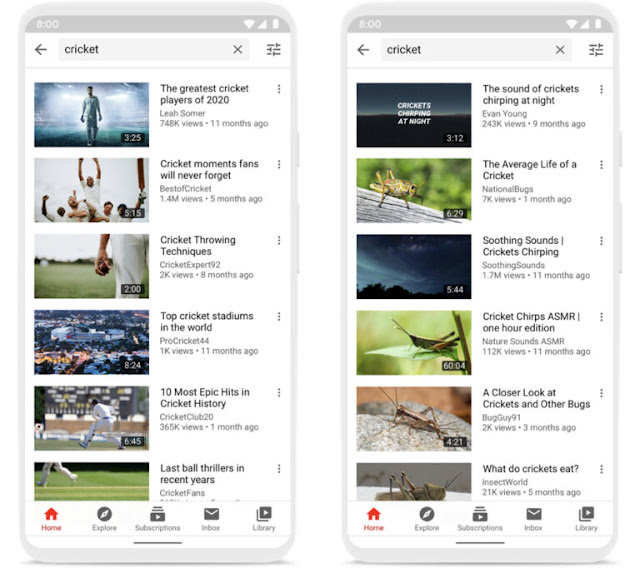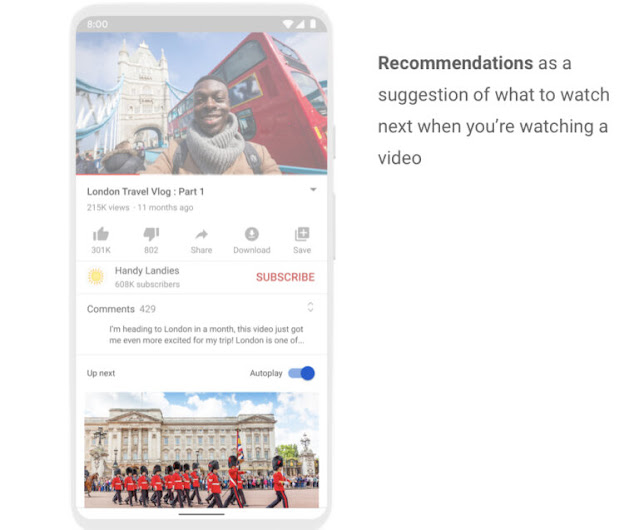As a part of a bigger effort to explain how YouTube works, Google published a new resource to answer commonly asked questions on YouTube search results.
Google created a whole new website, called How YouTube Works, which offers an in-depth look at all components of the YouTube platform.
 |
Here are some highlights from different sections associated with search and discovery.
YouTube Search:
YouTube’s search ranking system sorts through over 500 hours of content uploaded every minute to find the most relevant results for a query.
Video Marketing Blaster – Rank Videos On #1 Page Of Google And Youtube
YouTube Search prioritizes these three main elements when ranking its search results:
- Relevance
- Engagement
- Quality
Here’s more detail about each of these elements.
Relevance:
YouTube’s ranking algorithm looks at many factors when determining relevance. Without getting too specific, YouTube points out factors such as the title, tags, description, and video content itself.
Engagement:
YouTube’s search algorithm incorporates aggregate engagement signals from users, such as the watch time of a particular video for a particular query. The company notes that engagement signals are a valuable way to determine relevance similarly.
Quality:
To determine quality, YouTube uses signals that should be very familiar to search marketers.
“Finally, for quality, our systems are designed to spot signals that may help determine which channels demonstrate expertise, authoritativeness, and trustworthiness on a given topic.”
Expertise, authoritativeness, and trustworthiness are also known amongst search marketers as EAT.
It should be familiar because Google emphasizes the importance of these signals for its search results as well.
See Surprising Facts About E-A-T
Other Factor: Personalization
In addition to the above three main factors, YouTube also tries to determine relevancy for each user by taking into account a user’s search and watch history.
It’s not uncommon for search results to differ from one user to another for the same query.
“For example, if you watch a lot of sports videos and search for “cricket,” we might recommend videos featuring the sport cricket rather than nature videos with crickets in them.”
YouTube search and watch history can be cleared at any time, during which case YouTube’s search results won’t take these signals into consideration.
Raising authoritative sources:
YouTube makes a point of mentioning that it prioritizes content from authoritative sources when it’s appropriate to do so. This can include categories of content like news, politics, and medical or scientific information. In those areas, credibility is key. In other areas, such as music or entertainment, YouTube is more likely to look at signals like relevance, freshness, or popularity.
Also, see:
YouTube Recommendations:
Another opportunity for content creators to get discovered on YouTube is through recommendations. YouTube shares recommendations on its homepage and in the “Up Next” section as a suggestion of what to watch next. Many signals are taken into account when determining which videos to recommend, such as
- Watch & search history
- Channels subscribed to
- Location
- Time of day
- How many people watched a video to completion
- Direct feedback from users via random surveys
Users can fine-tune their recommendations by clicking on the “not interested” button, which will tell YouTube not to recommend similar videos in the future.
For more information about the inner workings of YouTube, subscribe to this blog, and get future newsletters. Thank you for reading this article, if you got any queries, comment me below, I will answer. If you like this article, don’t forget to share it. Thanks for reading.




1 thought on “Google Explains How YouTube Search Works”